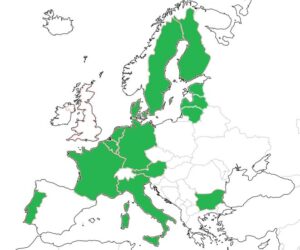A Unitary Patent (UP) is a European patent which has, from its date of grant, a unitary effect in all participating member states. This means that separate registrations or validations are not needed in the countries that participate in the unitary patent system. The patentee only needs to file a request for unitary effect at the European Patent Office. Thereafter, the European patent will come into effect, after grant, in a unitary manner in all those countries in which the unitary patent system is in force at the date of grant.
A Unified Patent Court (UPC) is a centralised European patent court, where all infringement and invalidation cases concerning the unitary patents are handled. Infringement and invalidation cases of classical European patents have been handled earlier only in national courts in those countries where the European patent has been registered.
Concerning classical European patents, the jurisdiction of the UPC will only extend to those countries, which are part of the unitary patent system. A transitional period of at least 7 years from the starting date has been decided, during which period a patentee can opt out the classical European patent from the jurisdiction of the UPC. In this case, the European patent will remain for its lifetime under the jurisdiction of national courts, unless opted back in.
The unitary patent system is based on two EU regulations (1257/2012 and 1260/2012) and on an international agreement, the Unified Patent Court Agreement (UPCA).
The unitary patent system has come into force and UPC started its operation on June 1, 2023.
Status of ratifications of the UPC-agreement
Countries that have ratified the UPCA are (marked in green in the map): Austria, Belgium, Bulgaria, Denmark, Estonia, Finland, France, Germany, Italy, Latvia, Lithuania, Luxembourg, Malta, Netherlands, Portugal, Slovenia, Sweden.
Thus, when the system starts, there will be 17 participating member states.
Why the new unitary patent system?
The traditional European patent system was set up in 1973, and updated in 2000. The system is based on one single application for all 39 contracting states of the European Patent Convention (EPC). Once the application is accepted and a European patent granted, it is however transformed to a bundle of national patents by registering it in the desired EPC countries. The registration incurs costs. In many countries, the national registration of the European patent also means translating the patent into the national language.
The registration already comes with a fee and translations increase the costs. Therefore, it has been rather expensive to obtain geographically broad protection in Europe for an invention. Also litigation has been difficult and expensive, since it has been mandatory to handle separate cases in national courts for EP registrations.
It has thus been a desire to form a new patenting system in Europe, in order to lower the cost of registration and litigation. In the unitary patent system, it is possible to register a granted European patent with one request for all the states participating in the unitary patent system. It is also intended that all litigation concerning European patents are handled in one single court which will take decisions that are valid in all participating member states.




